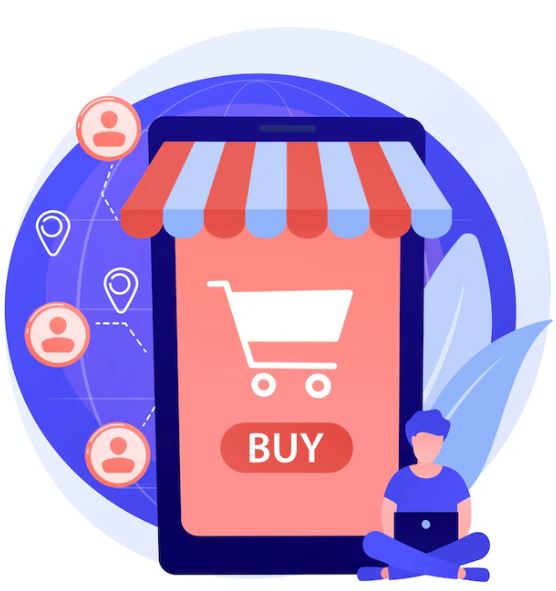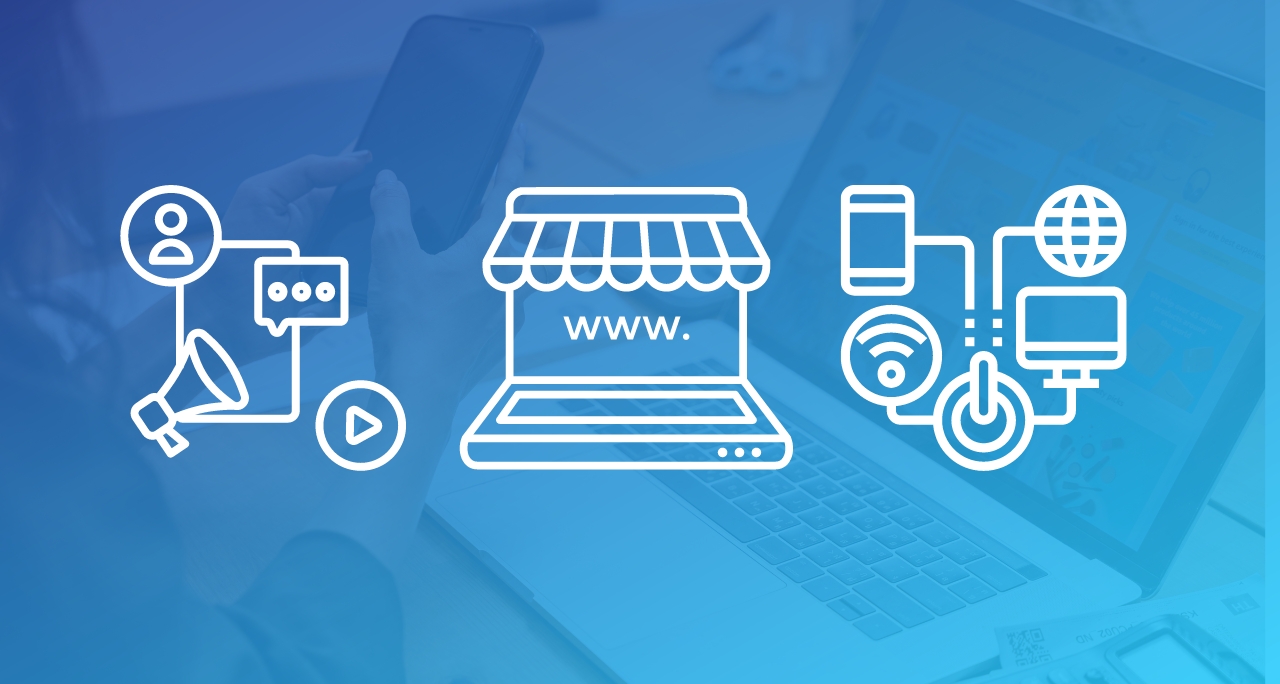In this decade of disruption, powerful social, economic and tech forces are redefining customers’ retail expectations. Here, we look at how bricks and clicks merchants are rising to the challenge as channels merge and services become faster and more fluid.
Increasingly digital and mobile-oriented consumers have high expectations when it comes to shopping. Whether in-store or online, they are raising the benchmark on convenience. Today’s sales journeys must be frictionless, fast, and fun.
‘Experience’ is now the new battleground for growth. And merchants are under immense pressure to deliver joined up services, real-time business flows and sustainable operational models to deliver what customers want as soon as they want it.

Merchants Must Now Exploit Every Channel To The Full
Omnichannel is rapidly becoming the norm as customers’ desire for seamless sales journeys force stores to ‘do digital or die’ and eCommerce brands to offer some form of physical presence.
According to McKinsey & Co, US omnichannel retailing is growing between 40% and 70% annually with customers ordering up to four times more than when buying from a single-channel retailer.
While it makes sound commercial sense for retailers to go omni, serving more channels in a seamless way is technically hard. It can also put lots of pressure on the supply chain, especially given escalating customer expectations around speed, convenience, and service.
To succeed, merchants need the right suppliers, skills and orchestration platforms to deliver multiple interconnected systems and frictionless transactions and interactions. They also need a clear vision of where retailing is heading and why.

So, What Are The Big Trends Impacting Retail’s Evolution?
Here are six of the most important trends changing the face of retail experiences and operations:

1. Convenient Hybrid Services – Shoppers Are Saying ‘Goodbye’ To Channel Borders.
COVID lockdowns saw the democratization of digital. Online shopping was embraced by all demographics and physical retailers sought to harness digital solutions to keep their businesses alive. Since then, economic and political pressures have disrupted supply chains and seen energy and other costs soar, forcing retailers to find new ways to harness digital to streamline operations and reduce overheads.
As a result, the borders between physical and digital worlds are becoming increasingly blurred. Hybrid services like ROPO (Research Online, Purchase Offline; or Research Offline and Purchase Online), BOPIS (Buy Online, Pick Up In Store), BORIS (Buy Online, Return In Store) are creating new levels of convenience and greater economies of scale. According to Deloitte, 83% of consumers now expect flexible shipping and options like BOPIS. Meanwhile IBM research found that hybrid shopping is now the primary buying method for 27% of consumers and 36% of Gen Z, more than any other generation.
2. Social Discovery And Sales – Community Platforms Are Becoming Spontaneous Shopfronts
Research by Global WebIndex, reveals that 60% of the world’s population uses social media with an average daily usage of 2 hours and 24 And fans are increasingly turning to social platforms to research the best price, features and functionality for products.
Today, social media is building buying intent where there previously was none, allowing brands to build contextual relevance, trigger discovery and create ‘immediate’ sales opportunities for followers. Indeed, merchants like Nordstrom, Victoria’s Secret and Lowe’s. are using social platforms as flagship virtual ‘storefronts’. Any business can now set up a single online store for customers to access via Facebook and Instagram so consumers can discover and purchase products through in-app browsers, which push users to branded websites or embedded checkouts.

3. Hyper-Personalization – AI Tools Are Making Customer Outreach More Relevant
A McKinsey & Co survey showed that 71% of consumers now expect companies to deliver personalized interactions and that companies who do so can drive 40% more revenue. Artificial intelligence (AI) and Machine Learning (ML) combined with tokenization, means merchants can now recognize returning customers and automatically tailor content in line with past purchases and behaviors, much faster and more accurately than ever before. Now they can boost conversion and revenue by customizing CRM communications, searches, recommendations, promotions, and chatbots, to make them more targeted, relevant and successful.
Online is not the only channel to benefit. In-store, digital adoption is also driving more personalized buying experiences. For example, using customer insights and journey mapping to send tailored promotions that shoppers can redeem in store. Looking ahead, the deep learning models now available through GPT could even personalize product descriptions as shoppers browse, highlighting specific values and features based on the individual’s preferences and past behaviors. As personalization becomes even more immersive, the challenge for retailers will be to strike a balance between knowing the customer and being over-intrusive.
4. Emerging Tech And Data Analytics – Retailers Can Now See Clearer And Make Better Decisions
The pandemic meant most retailers had to adopt a digital first approach. Not just with customers but across their operations – with suppliers and with their own staff. This paved the way for accelerated investment in cloud technology, integrated systems and automated processes. Many retailers are currently reaping returns by analyzing the resultant data to create next-generation store efficiency and optimizing total cost across the value chain.
Importantly, this tech has also given large retailers a more holistic 360-degree view of their sales organization and the ability to break down data silos. Able to gather and consolidate data in real-time across channels, suppliers and third-party providers, they can now share it across functions and enrich it with deeper user and contextual insight to explore new models and make better decisions. This type of responsiveness is vital in fast moving eCommerce markets where new trends emerge almost daily. Pricing is one area where this has been gamechanging. Plug-and-play solutions now allow retailers to continuously monitor challengers’ price movements and alter their own pricing rules fast to stay competitive.

5. Digital Supply Chains – Connected Systems Are Making Logistics Smarter And More Agile
Customers want to be able to buy what they want when they want, same day, every day. Retailers must work hard to meet their service and efficiency challenges across multiple channels. Traditional linear supply chains are often too slow, inflexible or distant to be able to achieve the service levels required, resulting in higher distribution costs and profit erosion.
To overcome this, merchants are shifting to dynamic, integrated digital supply networks (DSNs) using connected systems and cloud services to manage logistics and aid faster, more scalable and sustainable supply chains. Agile and “always-on”, DSNs provide instant visibility across multiple suppliers and allow supply networks to be dynamically planned, tracked, directed, expedited, merged, modified, optimized, and taught. And they can do this from upstream commodities to retail shelf placement.
6. Dynamic Assortment Cycles – Keeping The Product Mix Fresh And Relevant For Customers
In the past, assortments were primarily driven by replenishment cycles and historical data, in effect an ‘inward-out’ view. Today, assortment decisions are increasingly influenced by the consumer. Thanks to AI, analytics and DSNs, retailers can operate on a just in time basis, revising their Stock Keeping Units (SKUs) in each selling period, in line with shopper buying trends. This is making way for more diverse and dynamic product lines. For example in fashion the inclusion of sustainable, size-inclusive and celebrity-influenced collections.
In store, data-driven algorithms are being used to improve store design, and predictive models and dark analytics (using owned raw and unstructured data) to empower real-time forecasting. At the same time, RFID chips are being used to track inventory and provide real-time stock management.
With The Right Digital Investment, Retailers Can Improve Customer Experiences And Drive Growth
Whether it’s contactless ordering, curbside pickup, self-checkout systems, cost optimization, or AI-powered product recommendations, the right technology is now key to helping merchants cope with change, complexity and cost constraints.
Those companies who champion a digital-first approach across all their channels can expect to benefit from:
- Revenue growth – by removing friction and increasing convenience to win customer loyalty, drive higher AOV and CLTV, and reduce churn.
- Increased competitiveness – through better decisions powered by more real-world and real-time data.
- Greater marketing ROI – using deeper customer insight to personalize offerings and drive acquisition, conversion and upselling.
- More streamlined operations – by smashing functional silos, better leveraging automation and achieving full visibility of supply and value chains.

What’s Next For Retail Evolution?
Today, successful retailers must be able to offer hybrid omnichannel experiences that combine the benefits of both online and in-store sales to provide customers with speed, convenience, a wider selection of products, fast delivery and the option to start a journey on one channel and pick it up or finalize it on another channel.
Crucially, they must be able to do this efficiently, optimizing hybrid services, using automation and collecting insight while building more sustainable operations, and ensuring a positive impact on their bottom line.
As platforms, channels and ecosystems continue to merge, the whole concept of digital retailing will disappear. Consumers don’t think in terms of ‘channels’, they think ‘experiences’. As merchants follow suit, it’s inevitable that omni-channel will evolve into omni-presence – where brands operate fluidly to ensure experiences that reflect customers’ lifestyles, behaviors and buying preferences.
Like all the best technology, in the digital world the ultimate goal is to be so simple it becomes invisible to the user, removing barriers and making interaction easy so that only the benefits shine through.





